In today’s foodie age, cooking classes are trendy. And for good reason: They’re the perfect opportunity to learn a new skill, have a culturally broadening experience, and enjoy a great meal, all at the same time. And, while I’ve enjoyed great cooking lessons in polished classrooms, some of the best take place in more casual settings.

On a previous visit to Tuscany, my wife and I joined Marta in the kitchen of her restaurant. She taught us how to make a spectacular, yet simple, all-purpose tomato sauce: just olive oil, garlic, tomatoes, salt, and a few red-pepper flakes…simmered and blended to smooth perfection. We taught the recipe to our relatives, who — to this day — regularly cook up a batch of “Marta’s sauce.”
On this trip, we wanted to bring the whole family back to Marta’s kitchen. But she’s wintering in Australia, so instead, her mother Laura invited us into her home kitchen to cook — and eat — an extravagant Tuscan lunch.
Not quite the traditional stone farmhouse we’d imagined, Mamma Laura lives in a plush, modern home in a remote hamlet high in the mountains. Standing at her sink, she gazes out over forested slopes, past a beefy plume of smoke rising from a furniture factory just below. It’s a view that makes doing the dishes a reward rather than a chore.
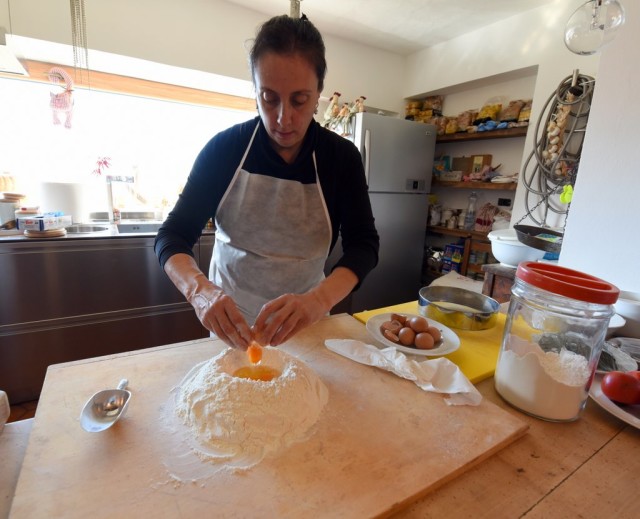
From the moment we arrived, Mamma Laura masterfully orchestrated the meal. She’d demonstrate the task at hand — chopping up chunks of squash, packing ingredients into little pouches of cabbage, rolling out long sheets of pasta dough — then turned us loose to try it out. Ingredients would disappear into an oven or pot or blender, then reappear when it was time for the next step. And, miraculously, everything was done at exactly the right time.
Every so often, Laura pulled out a moonshine-like jug of vibrant green olive oil — just pressed a few days ago — and poured it generously into the recipe. While our calorie-conscious American sensibilities screamed “too much!,” the result was deliciously persuasive. (And let’s be honest: Are a few extra dollops of fresh-from-the-grove oil any worse for your health than a can of diet pop or a preservative-packed cookie? You could, quite reasonably, make a strong case for the opposite.) One thing I’ve learned from cooking in a Tuscan kitchen: Americans are afraid to use nearly as much salt and olive oil as Italians do. If you want authentic flavor, you have to go all-in.
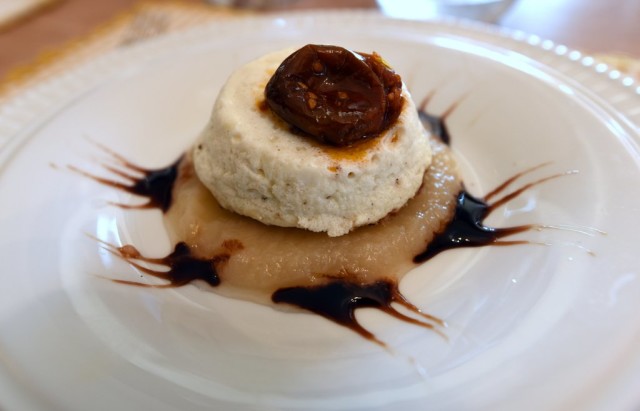
The first course was a crustless, savory cheese tortino (young pecorino and ricotta, made light and delicate by folding in whipped egg whites, then baked in the oven) perched on a pear puree and topped with a marinated, sun-dried tomato.
Next was a scrumptious autumn soup. We rough-chopped chunks of a giant, comically orange “pumpkin” (more like a winter squash), which were then mashed and simmered. Laura mixed in some peeled, boiled chestnuts and a handful of porcini mushrooms. The result wasn’t the sickly-sweet “pumpkin soup” I avoid on menus back home. It was rich, hearty, and satisfying — a Tuscan November in a bowl.
Then came the pasta course: handmade ravioli stuffed with nettle greens and ricotta cheese. This one required a particularly hands-on assembly.
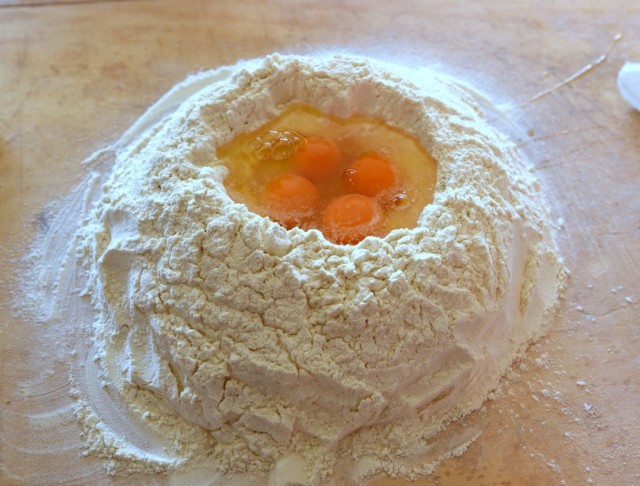
First, Laura created a little volcano of flour, and cracked some vibrant-orange eggs into the crater.

Then we took turns carefully hand-mixing with a fork, as Laura sprinkled in more flour.
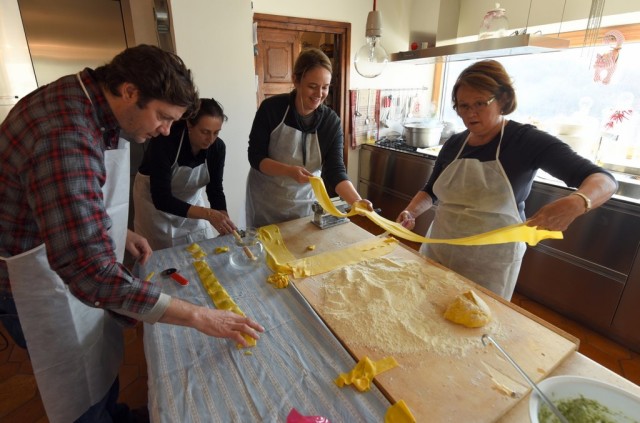
When the mushy mess transformed into a solid hunk of dough, we kneaded it, then cranked long, yolk-yellow strips through a pasta roller until they were thin as a ribbon.
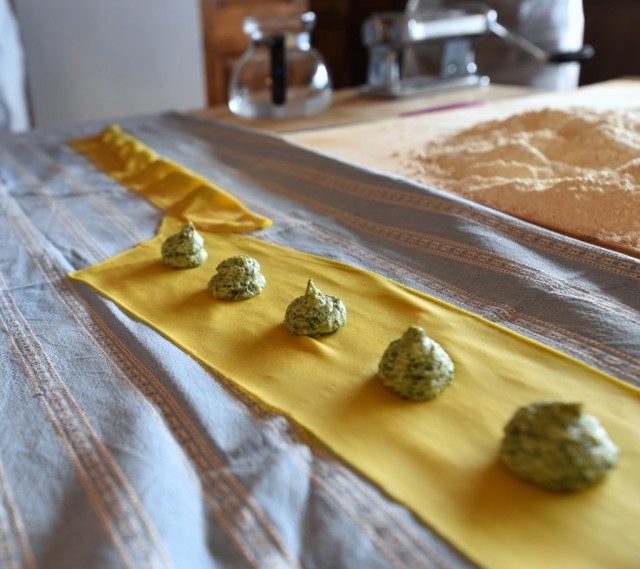
Laura carefully laid each pasta sheet onto the table, piped out the proper amount of filling, folded it over, cinched it shut with water, and sawed out flawless ravioli.
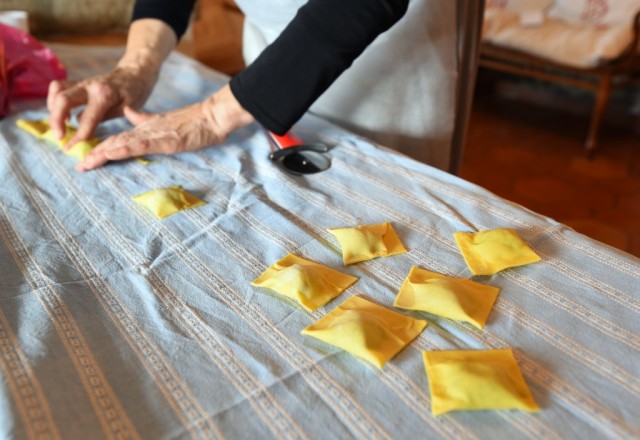
The main course was an outrageously delicious cabbage roll, with a filling of bread crumbs soaked in saffron-infused milk, subtly caramelized raisins, just-cracked walnuts, and decadently melted Gruyère cheese (one of the meal’s only non-local ingredients). Everyone rolled their own. And, of course, it was topped with “Marta’s sauce.”
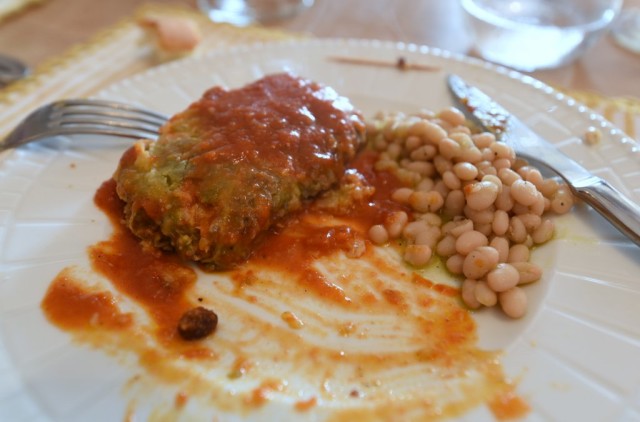
On the side were the best beans I’ve ever eaten. This dish began as a few handfuls of dried beans in the bottom of a pressure cooker. (Italians — with their regional pride and respect for culinary subtlety — are very specific about their ingredients. Laura assured us these were only the very best beans, grown on the shores of Lake Bolsena. Her American students glanced at each other, shrugged, and scribbled “white beans” in our notebooks.) Into the pot went water, abundant olive oil, a few cloves of garlic, pepper flakes, and a little sachet of fresh sage and rosemary. The pot hummed along on the stove all morning long, and by lunchtime, the beans were luxuriously tender and impossibly flavorful.
And for dessert: a mousse made with the same chestnuts that had gone into the soup, topped with whipped cream, all sitting on a thick puddle of liquefied flesh from a borderline-overripe persimmon.

It wasn’t until we’d eaten to our hearts’ content that we realized the meal had been entirely meatless (to accommodate a vegetarian in the family). And do you know what? With cooking this good, nobody even missed the meat.
Anyone can have an experience like this. It’s a substantial investment of time, but from a financial perspective, it’s a tremendous value: Our all-morning cooking class, and the meal that resulted, cost us about the same, per person, as a nice dinner out.
Incorporating amazing food — and unforgettable experiences — into your travels doesn’t have to be expensive. You just have to set your priorities and plan ahead.
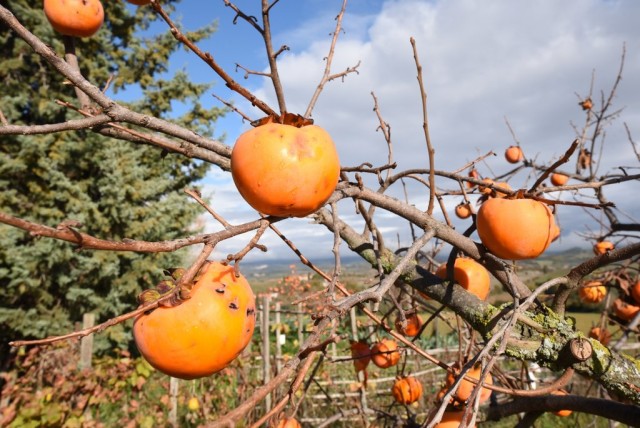


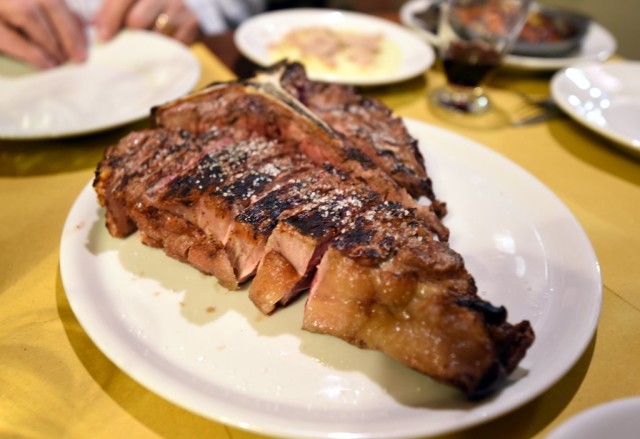
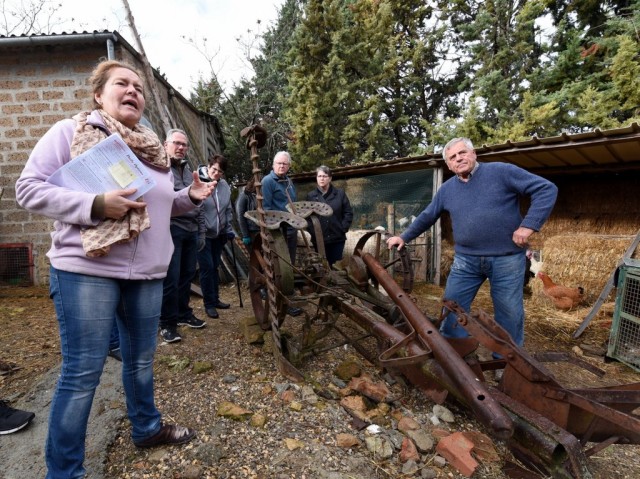

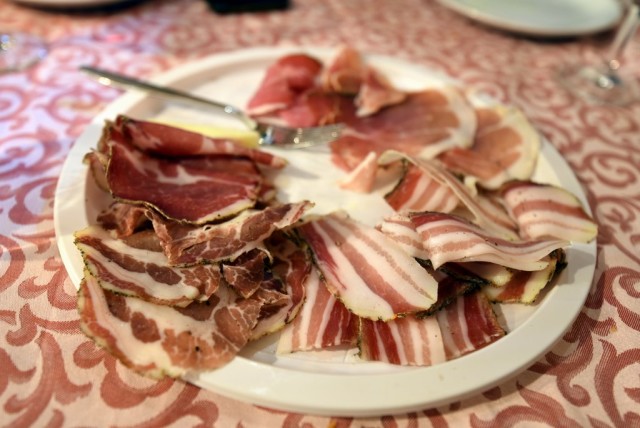

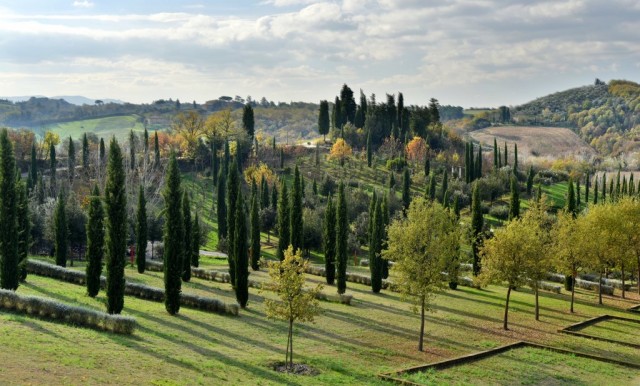
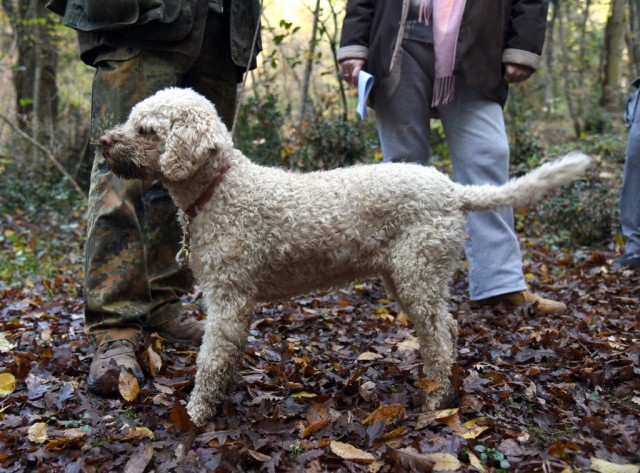

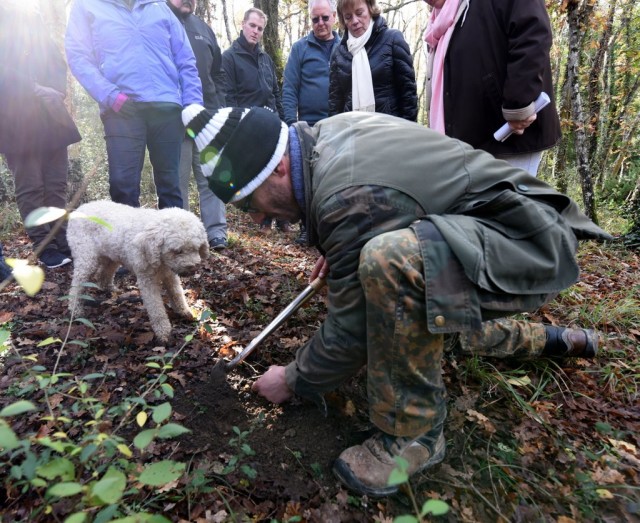
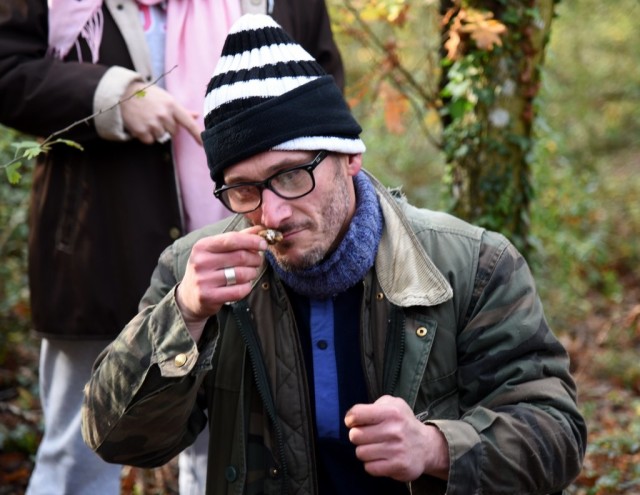
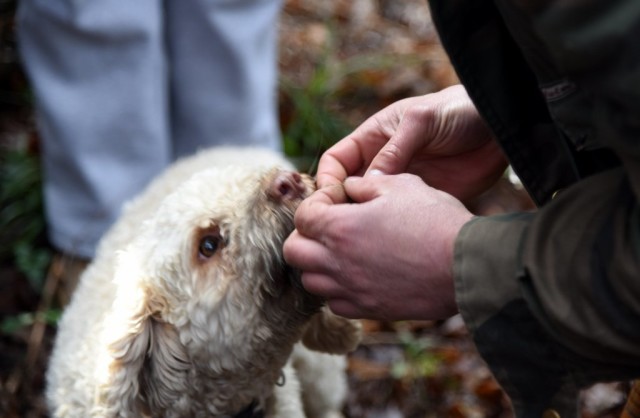
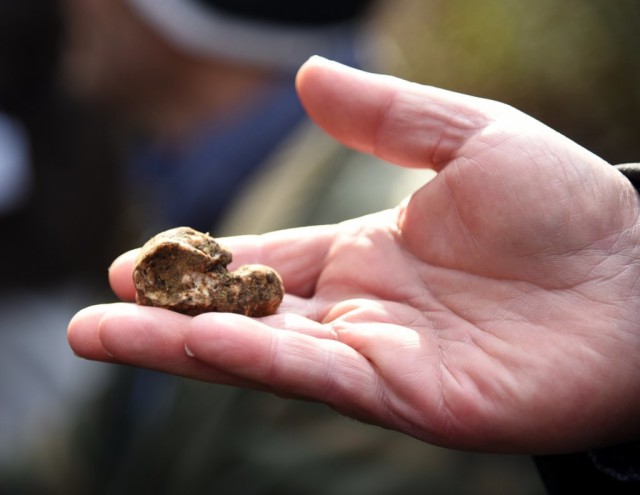
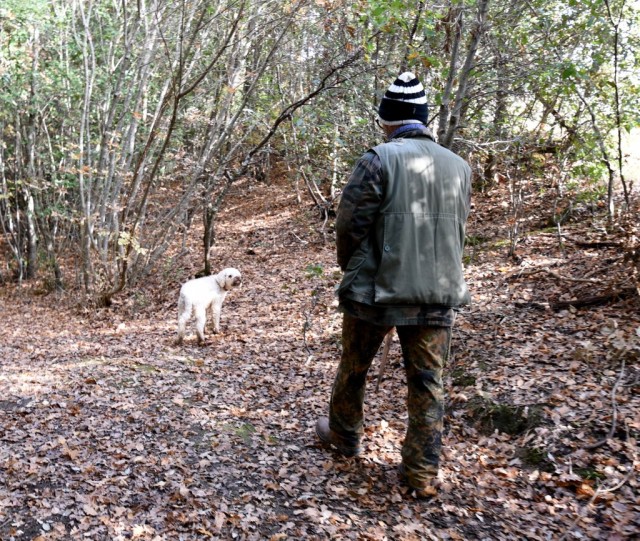
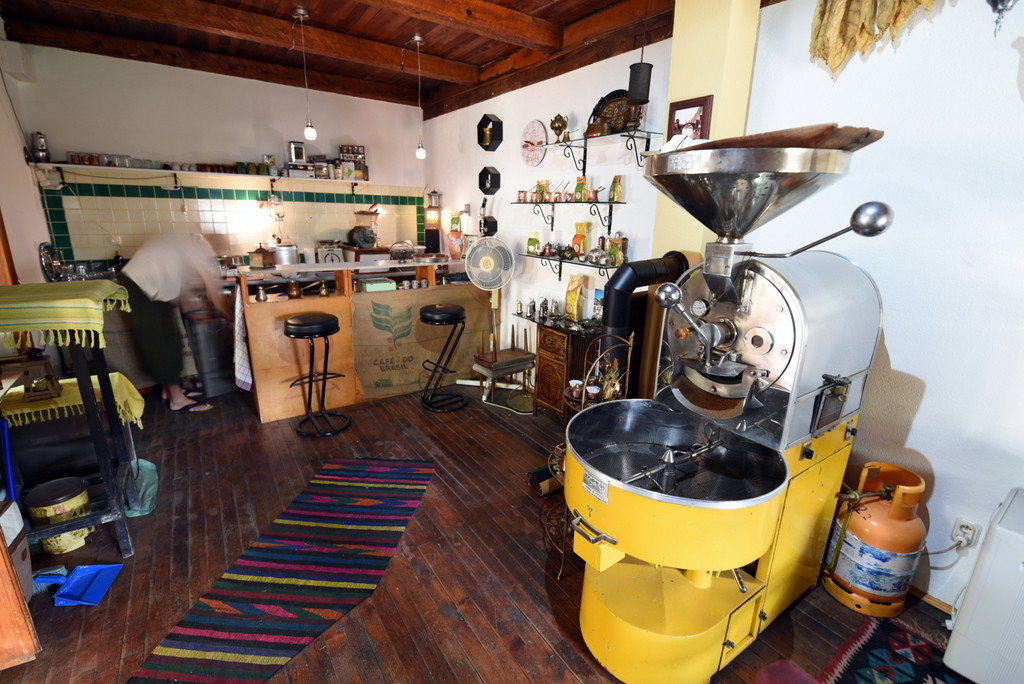


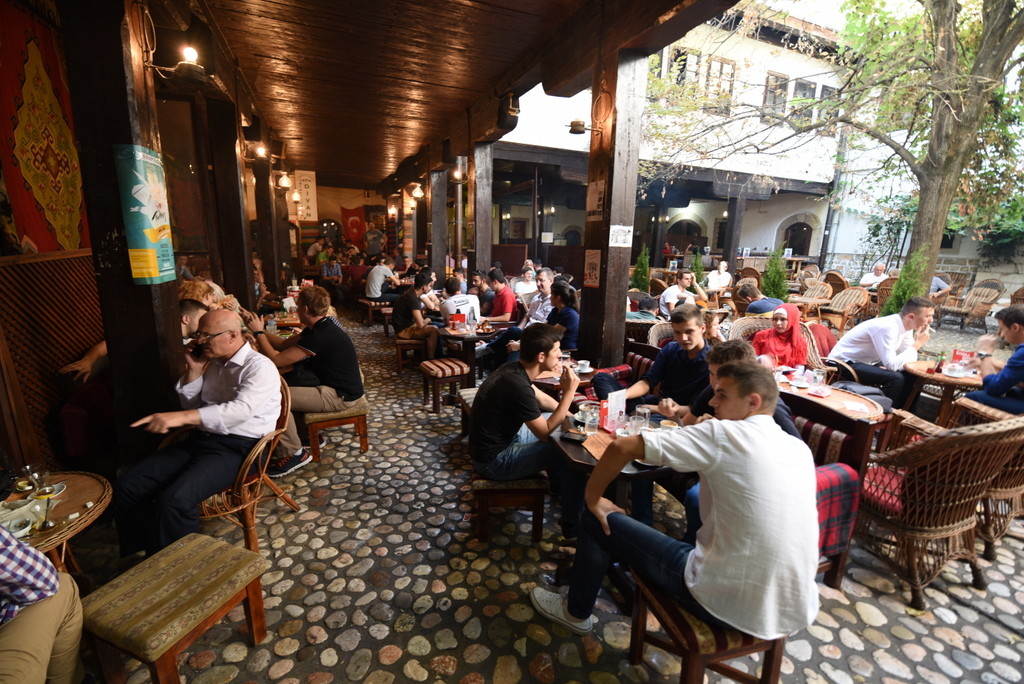


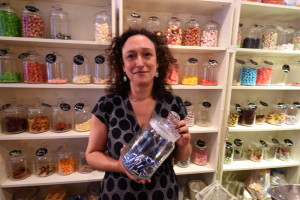 Lickety Splits also has a small art gallery. In the back room, Naomi makes broaches, pendants, and other jewelry from maps. Through her work with maps, she’s gotten to know places very well. When I told her I grew up in Central Ohio, she could visualize the state.
Lickety Splits also has a small art gallery. In the back room, Naomi makes broaches, pendants, and other jewelry from maps. Through her work with maps, she’s gotten to know places very well. When I told her I grew up in Central Ohio, she could visualize the state.